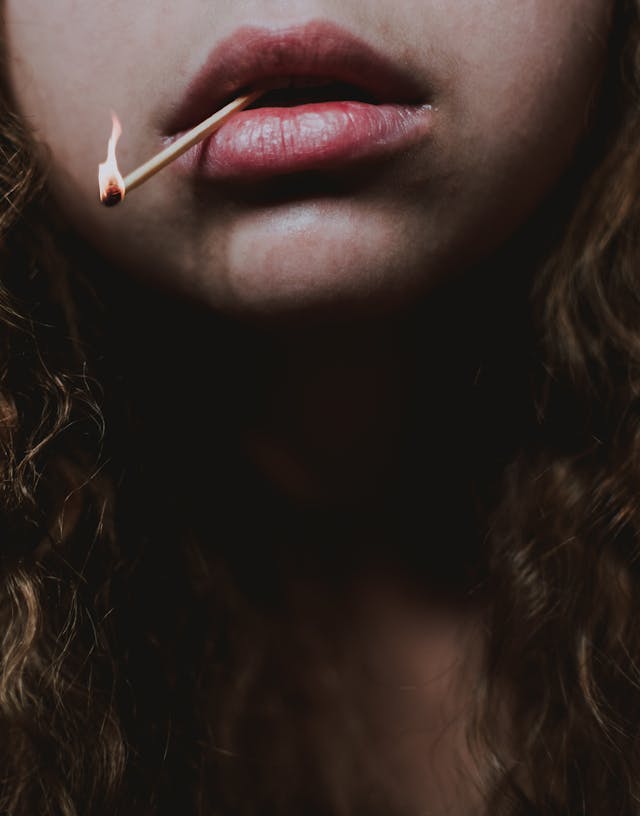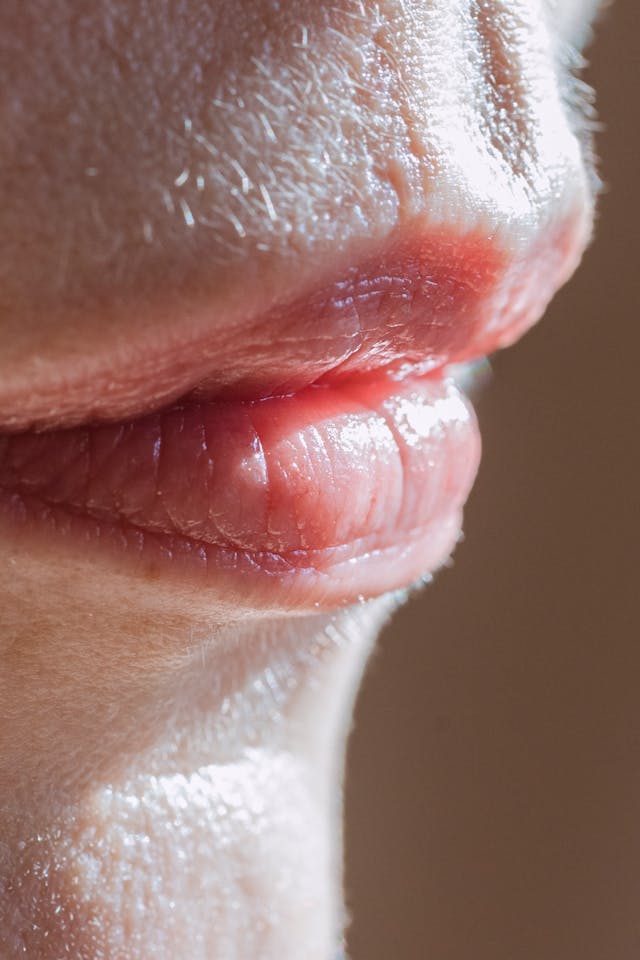
Understanding the Lip Filler Swelling Stages: What to Expect
Lip fillers have become a popular cosmetic procedure for enhancing the volume and shape of lips. While the results can be stunning, it’s important to understand that there is a recovery process involved, which includes swelling. Knowing what to expect during each stage of swelling can help manage expectations and ensure a smoother recovery. Here’s a guide to the lip filler swelling stages:
- Immediate Swelling (Day 1–3
- ): Right after getting lip fillers, it’s normal to experience immediate swelling. This is the body’s natural response to the injection. The lips may appear overly full or uneven during this time, but rest assured, this is temporary.
- Initial Subsiding (Days 3–5): After the first few days, you may start to notice the swelling gradually subsiding. Your lips will begin to look more natural, although they may still feel slightly tender or firm to the touch.
- Peak Swelling (Days 5-7): Around the fifth to seventh day post-procedure, you may experience peak swelling. This is when your lips may appear the fullest. It’s important to avoid touching or pressing on your lips during this time to prevent further irritation.
- Gradual Reduction (Days 7–14): From the second week onwards, you should start to see a gradual reduction in swelling. Your lips will continue to settle, and the final results will become more apparent.
- Complete Healing (Week 2-4): By the end of the first month, the majority of the swelling should have subsided, and your lips will start to feel more natural. At this stage, you can better assess the final results of your lip filler treatment.
- Final Results (After 1 Month): It’s important to note that the final results of your lip filler treatment may not be fully visible until about a month after the procedure. This is because it takes time for the filler to fully integrate with your lip tissue and for any residual swelling to completely resolve.
During the swelling stages, it’s essential to follow your practitioner’s post-procedure care instructions. This may include avoiding certain activities, such as smoking or excessive sun exposure, and using recommended products to aid in the healing process.
In conclusion, understanding the lip filler swelling stages can help you prepare for the recovery process and manage your expectations. Remember that swelling is a normal part of the healing process and should gradually subside over time. If you have any concerns about your healing process, don’t hesitate to contact your practitioner for guidance.
Additionally, during the healing process, it’s important to stay hydrated and maintain a healthy diet to support your body’s natural healing process. Avoiding salty foods can also help reduce swelling.
If you experience any unusual or prolonged swelling, pain, or other concerning symptoms, it’s important to contact your practitioner immediately. While some swelling is normal, excessive or persistent swelling could indicate a complication that needs to be addressed.
In conclusion, understanding the lip filler swelling stages is essential for anyone considering or undergoing lip filler treatment. By knowing what to expect during each stage of the healing process, you can better prepare yourself and ensure a smoother recovery. Remember to follow your practitioner’s instructions closely and communicate any concerns you may have during your recovery journey.
In conclusion, understanding the lip filler swelling stages is essential for anyone considering or undergoing lip filler treatment. By knowing what to expect during each stage of the healing process, you can better prepare yourself and ensure a smoother recovery. Remember to follow your practitioner’s instructions closely and communicate any concerns you may have during your recovery journey.
It’s also important to have realistic expectations about the results of your lip filler treatment. While swelling is temporary and will subside, the final results may vary depending on factors such as the type of filler used, your individual lip anatomy, and the skill of your practitioner. Open communication with your practitioner about your goals and expectations can help ensure that you achieve the desired results.
In summary, the swelling stages of lip filler treatment are a natural part of the healing process. By understanding these stages and following your practitioner’s advice, you can minimize discomfort and achieve beautiful, natural-looking results from your lip filler treatment.
Massaging lip filler lumps can help break down the filler and smooth out any unevenness. Here’s a guide on how to massage lip filler lumps safely and effectively:
- Wait for the Right Time: It’s important to wait until the filler has settled and any initial swelling has subsided before massaging. This is typically around 1-2 weeks after the procedure, but follow your practitioner’s advice.
- Clean your hands: Wash your hands thoroughly with soap and water to ensure they are clean before touching your lips.
- Apply a Warm Compress: To help soften the filler and make it more malleable, apply a warm compress to your lips for a few minutes. This can help make the massage more effective.
- Massage Gently: Using your fingers, gently massage the lumpy areas in a circular motion. Apply gentle pressure, but be careful not to press too hard, as this can cause further irritation.
- Repeat Several Times a Day: Massaging the lumps several times a day can help break them down more quickly. Be consistent with your massages, but again, be gentle to avoid bruising or further swelling.
- Follow Up with Your Practitioner: If you’re unsure about how to massage your lips or if you’re not seeing any improvement, it’s best to follow up with your practitioner. They may recommend additional techniques or treatments to help resolve the lumps.
- Be Patient: It may take some time for the lumps to completely resolve, so be patient and continue with your massages as directed by your practitioner.
It’s important to note that while massaging can help improve the appearance of lumps, it may not always completely eliminate them. In some cases, additional treatments may be necessary. Always follow your practitioner’s advice and recommendations for the best results.
Sure, here are some frequently asked questions about swelling and medicines used in lip filler injections:
Q: Why do I experience swelling after lip filler injections? Swelling is a normal part of the body’s response to the lip filler injection. It occurs as a result of the body’s natural inflammatory process, which is triggered by the injection.
Q: How long does the swelling last after lip filler injections? A: The duration of swelling can vary from person to person, but it typically resolves within a few days to a week after the injection. In some cases, it may take longer for the swelling to completely subside.
Q: Can I take medication to reduce swelling after lip filler injections? A: Yes, your practitioner may recommend over-the-counter pain relievers or anti-inflammatory medications to help reduce swelling and discomfort. However, always follow your practitioner’s advice and the recommended dosage instructions.
Q: Are there any specific medications that can help reduce swelling after lip filler injections? A: Some common medications that may be recommended to reduce swelling include ibuprofen, acetaminophen, or arnica montana. However, it’s important to consult with your practitioner before taking any medication, as they can provide personalized advice based on your medical history and the specific filler used.
Q: Can I use ice packs to reduce swelling after lip filler injections? Yes, applying ice packs or cold compresses to the lips can help reduce swelling and discomfort. However, be sure to wrap the ice pack in a cloth to avoid direct contact with the skin and limit the application to 10–15 minutes at a time.
Q: Is it normal to have uneven swelling after lip filler injections? A: Yes, it’s normal to have some degree of uneven swelling after lip filler injections, especially during the initial stages of healing. However, if you have concerns about the symmetry or appearance of your lips, it’s best to consult with your practitioner.
Q: When should I seek medical attention for swelling after lip filler injections? A: If you experience excessive or prolonged swelling, severe pain, or other concerning symptoms after lip filler injections, it’s important to seek medical attention immediately. These could be signs of a complication that needs to be addressed promptly.
Q: How can I reduce swelling naturally after lip filler injections? A: There are several natural remedies that may help reduce swelling after lip filler injections, including staying hydrated, avoiding salty foods, applying aloe vera or vitamin E to the lips, and gently massaging the lips to promote circulation. However, it’s important to consult with your practitioner before trying any natural remedies to ensure they are safe and appropriate for you.
Q: Can I use topical creams or ointments to reduce swelling after lip filler injections? A: Your practitioner may recommend a topical cream or ointment containing ingredients such as arnica montana or hyaluronic acid to help reduce swelling and promote healing. However, it’s important to follow your practitioner’s advice and the recommended usage instructions for any topical products.
Q: How long does it take for the swelling to go down completely after lip filler injections? A: The duration of swelling can vary depending on factors such as the type of filler used, your individual healing process, and how well you follow post-procedure care instructions. In general, most swelling should resolve within a few days to a week after the injection, but it may take longer for the swelling to completely subside.
Q: Is it normal to have swelling and bruising after lip filler injections? A: Yes, it’s normal to experience some degree of swelling and bruising after lip filler injections, as these are common side effects of the procedure. However, if you experience excessive or prolonged swelling or bruising, it’s important to consult with your practitioner.
Q: Can I apply makeup to my lips to cover up swelling after lip filler injections? A: Yes, you can apply makeup to your lips to help cover up any swelling or bruising. However, it’s important to wait until any initial swelling has subsided and the injection sites have healed before applying makeup to avoid irritation or infection.
Q: Are there any specific post-procedure care instructions I should follow to reduce swelling after lip filler injections? A: Yes, your practitioner will provide you with specific post-procedure care instructions to follow, which may include avoiding strenuous activities, applying ice packs or cold compresses to the lips, and avoiding certain foods or drinks that may exacerbate swelling. It’s important to follow these instructions carefully to ensure a smooth recovery process.
Disclaimer: The information provided regarding lip fillers is for general informational purposes only and should not be considered medical advice. It is based on the experience and expertise of Dr. ASEEM at Cosmocare, who has been practicing in medical and healthcare for over two decades.
The information provided does not constitute a doctor-patient relationship, and individual results may vary. It is important to consult with a qualified healthcare professional for personalized advice and treatment options regarding lip fillers.
Dr. ASEEM and Cosmocare do not endorse any specific product or treatment mentioned in this information. Any reliance on the information provided is at your own risk, and Dr. ASEEM and Cosmocare shall not be liable for any losses or damages resulting from the use of this information.

